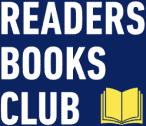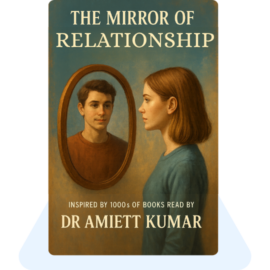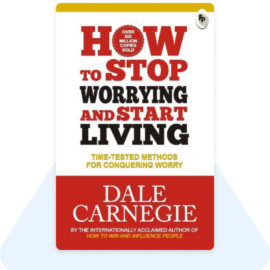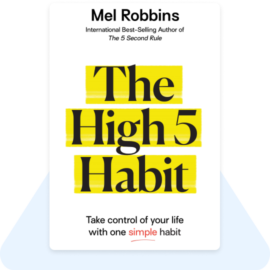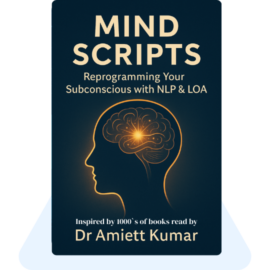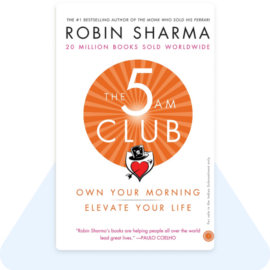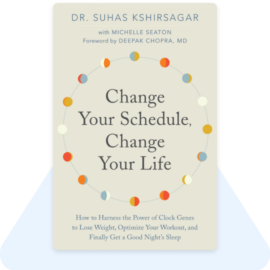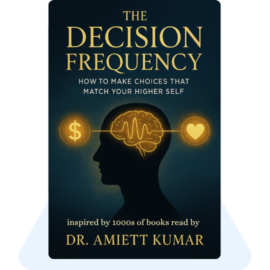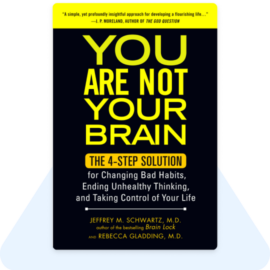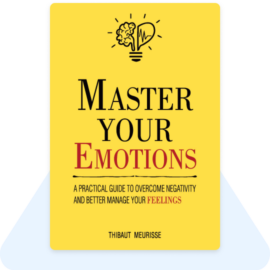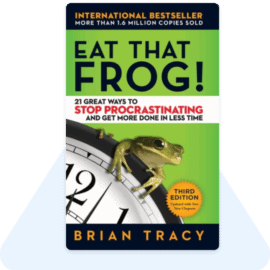The Mirror Principle
Every relationship in your life — romantic, familial, professional — is a mirror reflecting something within you. The people who love you reflect your light. The people who challenge you reflect your wounds. And the people who leave often reflect the parts of you still learning self-worth.
Dr Amiett explains that relationships are not random coincidences; they are vibrational responses to your emotional frequency. You don’t attract who you want — you attract who you are being. Every connection becomes an opportunity for self-awareness and growth.
When you begin to see others not as opponents but as mirrors, pain transforms into perspective. The breakup that broke you reveals where you feared abandonment. The argument that drained you exposes where you still need boundaries. Love becomes your greatest spiritual teacher.
“Every person you meet is a mirror showing you what you most need to love, heal, or release within yourself.” – Dr Amiett Kumar
This book is an inward journey disguised as a study of relationships. It’s not about changing others — it’s about understanding what they awaken in you. When you master that awareness, you master the energy of love itself.
Chapter 1 – The Law of Reflection
Relationships don’t just happen — they’re mirrors that respond to your inner state of consciousness. The Law of Reflection states that your outer world, especially your relationships, mirrors your inner world.
Psychologically, this principle stems from projection. What you reject or deny within yourself, you unconsciously project onto others. Spiritually, it aligns with the Law of Attraction — your dominant vibration determines the quality of people and experiences you attract.
Dr Amiett gives a simple example:
If you keep meeting people who don’t value you, the universe is mirroring the belief “I’m not enough.”
If you keep attracting unavailable partners, it may reflect the fear of true intimacy hidden within you.
“The universe doesn’t send people to punish you; it sends people to reveal you.” – Dr Amiett Kumar
When you change your energy, the reflection changes too. The moment you begin treating yourself with love, respect, and honesty, your relationships start to mirror those very qualities.
Practical Exercise
Take a sheet of paper. Write down the top three people who trigger you emotionally. Next to each name, write: “What part of me are they reflecting?”
You’ll be amazed how quickly clarity replaces blame.
The essence of this chapter: others are not against you — they’re responding to the frequency within you. When you learn to read the mirror instead of resenting it, every relationship becomes a revelation.
Chapter 2 – Emotional Triggers: The Hidden Teachers
Have you ever wondered why some people can make you feel peaceful, while others — with just one sentence — can ignite your anger or pain?
Those intense reactions aren’t random. They’re emotional triggers, and they point to the very places within you that still need healing.
Dr Amiett explains that triggers are not created by others — they are activated by them. The person is merely the mirror; the reflection belongs to you. A trigger is a message from your subconscious saying: “Here lies an old wound still waiting for love and understanding.”
Most of our emotional reactions trace back to unprocessed experiences — moments in childhood or past relationships where we felt rejected, ignored, or unsafe. When someone unknowingly touches that same wound, the emotion resurfaces as anger, sadness, or defensiveness.
“People don’t trigger you — they reveal where your power still hides.” – Dr Amiett Kumar
Instead of reacting, observe. When you pause before responding, you shift from pain to perspective. Every trigger then becomes a teacher — showing you where you still need to grow.
The 3-Step Process to Transform Triggers
- Pause and Breathe
When triggered, take three slow breaths. This interrupts the automatic emotional reaction and activates awareness. - Feel Without Judgment
Ask yourself: What emotion am I actually feeling right now? (hurt, rejection, fear, shame, etc.) Naming the emotion dissolves its control. - Reframe the Mirror
Instead of “They made me feel this way,” try “They helped me see what I still need to heal.”
This single shift changes pain into power.
The moment you start treating triggers as teachers, your emotional intelligence expands. You stop taking things personally and begin seeing life as feedback.
Dr Amiett beautifully reminds:
“Your peace begins where your reactivity ends. Every time you choose awareness over reaction, you reclaim your power.”
The essence of this chapter: triggers don’t show your weakness — they show your readiness to evolve.
Key Takeaway
This week, observe one recurring trigger. Instead of reacting, journal what emotion or belief lies beneath it.
Ask yourself: “What part of me needs love right now?”
That awareness is emotional alchemy in motion.
Chapter 3 – The Shadow in Love
Every person carries two sides — the self we show to the world, and the self we hide even from ourselves.
Psychologist Carl Jung called this hidden part the shadow — the collection of qualities, emotions, and desires we reject, deny, or fear within us.
In relationships, this shadow doesn’t stay hidden for long.
It shows up in the people we dislike, the traits we judge, and even in the partners we choose.
Dr Amiett explains that love has a strange intelligence — it brings people into your life who embody the very traits you need to acknowledge within yourself.
If you’re controlling, you’ll attract someone who challenges control.
If you fear rejection, you’ll attract someone whose distance triggers it.
If you suppress your own anger, you’ll often meet people who express it for you.
“We don’t attract our opposites — we attract our reflections. The shadow simply wears another face.” – Dr Amiett Kumar
From a psychological view, the shadow is not “bad.” It’s simply unintegrated energy — parts of your personality waiting for acceptance.
From a spiritual view, relationships are divine mechanisms that help bring these unhealed aspects to light so you can grow in consciousness.
How to Work with the Shadow in Love
- Notice What You Judge in Others
What irritates you about others often reveals what you’ve disowned within yourself. - Ask: “Where does this live in me?”
When you spot a recurring pattern (anger, pride, coldness), reflect — have I ever behaved this way or feared being seen like this? - Practice Compassionate Integration
Instead of rejecting the trait, bring it into awareness.
For example: “Yes, I have anger, but I also have peace.”
Integration ends projection.
As Dr Amiett says:
“The parts of you that you deny don’t disappear — they just dress up as people and come back into your life until you finally accept them.”
The moment you stop judging the reflection, the mirror stops hurting.
When you integrate your shadow, relationships stop being battles — they become mirrors of wholeness.
Key Takeaway
Make a list of three traits you strongly dislike in others.
Then ask: “Where might this trait live inside me — even in a small way?”
This practice turns judgment into understanding and heals both love and self-image.
Chapter 4 – The Patterns We Repeat
Have you ever wondered why you keep attracting similar kinds of people — the ones who trigger the same pain, or make you feel the same emptiness again and again?
That’s not coincidence. That’s a pattern.
Dr Amiett explains that relationship patterns are unresolved emotional loops playing on repeat until we learn their lesson. Each person who comes into your life is a messenger, giving you another chance to break the cycle — to respond differently than you did before.
“Until you heal the pattern, the universe will change the faces but not the lesson.” – Dr Amiett Kumar
These loops begin early — often in childhood — when we form emotional templates around love, attention, and worthiness. If you grew up feeling unseen, you may attract partners who don’t listen. If love once meant sacrifice, you may find yourself giving too much.
Your subconscious isn’t punishing you; it’s trying to complete the story.
The Cycle of Repetition
- Attraction: You feel drawn to a familiar emotional energy (comfort zone).
- Activation: The same wound gets triggered (abandonment, rejection, control).
- Reaction: You repeat the same coping behavior (withdrawal, people-pleasing, defensiveness).
- Realization: If awareness doesn’t arise, the cycle resets — new person, same emotion.
The cycle ends only when awareness begins. The moment you recognize the pattern, you reclaim your power to choose differently.
Breaking the Pattern: The 3-Step Reprogramming Method
- Awareness: Acknowledge the emotional pattern without judgment.
Ask yourself — What emotion repeats across my relationships? - Healing the Root: Go back to the first time you remember feeling this emotion.
Often, the origin isn’t a partner — it’s a parent, friend, or childhood memory. - Conscious Action: Next time the pattern appears, respond differently.
The healing happens in the new choice — not the old story.
Dr Amiett ties this concept beautifully with both NLP and LOA:
NLP teaches that repetition builds neural pathways — change the behavior, and you change the brain.
LOA teaches that frequency creates repetition — change the vibration, and you change the reflection.
When both are combined, emotional freedom becomes inevitable.
The essence of this chapter: Patterns don’t persist because you’re broken — they persist because you’re unconscious. Once you become aware, they dissolve.
Key Takeaway
Reflect on your last three relationships or close connections.
Write one repeating emotion you experienced in all of them (e.g., rejection, control, fear).
Now ask: “What is this emotion trying to teach me?”
That awareness begins the cycle’s end.
Chapter 5 – Attachment and Energy
Every relationship carries two invisible threads — one psychological and one energetic. The psychological thread is attachment, the emotional bond formed through memories and experiences. The energetic thread is vibration, the unseen current that flows between two people, even when they’re miles apart.
Dr Amiett explains that both are essential, but when misunderstood, they create imbalance — attachment turns into dependence, and energy turns into entanglement.
“Love connects you. Attachment traps you. The difference is awareness.” – Dr Amiett Kumar
Understanding Attachment Styles
Modern psychology identifies three main attachment styles that influence how we love and react:
- Anxious Attachment:
The fear of losing love. These individuals seek constant reassurance.
Their energy feels like reaching outward — always searching for safety. - Avoidant Attachment:
The fear of being controlled or hurt. They protect themselves by withdrawing.
Their energy feels like pulling away — guarding their independence. - Secure Attachment:
The balance between intimacy and individuality.
Their energy feels stable and grounded — open yet free.
Most people swing between anxious and avoidant depending on their emotional wounds and past experiences.
Spiritually, this is the dance of energy imbalance — when love shifts from being a flow to being a tug-of-war.
Energy Cords and Emotional Vibration
Every emotional connection forms an energetic “cord.” When the relationship is loving, the energy flows freely. When it becomes toxic or codependent, these cords begin to drain one or both individuals.
Dr Amiett emphasizes the importance of energetic boundaries — staying connected without being consumed. You can love deeply without losing yourself.
To restore balance, he recommends:
- Grounding practices: Meditation, breathwork, or time in nature to reset your personal energy.
- Cord-clearing visualizations: Imagine golden light gently releasing old attachments that no longer serve you.
- Affirmations: “I love freely, and I release freely.”
Psychologically, you strengthen secure attachment by learning to self-soothe — giving yourself the reassurance you once sought from others. Energetically, you strengthen it by maintaining your inner calm regardless of external behavior.
The moment you stop grasping or running, the energy of love stabilizes. Relationships then become peaceful exchanges, not emotional rollercoasters.
The essence of this chapter: Love becomes healthy when energy flows without fear and attachment holds without control.
Key Takeaway
Observe your energy in relationships this week. Do you lean in too much or pull away too quickly?
Balance begins when you learn to stay present — connected, but not dependent.
Chapter 6 – Boundaries and Self-Respect
Most people believe that love means saying yes — yes to giving, yes to adjusting, yes to forgiving everything. But real love, Dr Amiett reminds us, thrives not on endless compromise but on clear boundaries that protect mutual respect and emotional safety.
Boundaries are not walls; they are bridges of clarity.
They don’t shut people out — they show them how to meet you respectfully.
“Boundaries don’t distance love — they define it.” – Dr Amiett Kumar
Why Boundaries Matter
Without boundaries, love quickly turns into imbalance. One person gives too much, the other takes too much, and both end up drained.
Healthy boundaries allow love to flow freely without guilt, fear, or resentment.
Psychologically, boundaries are acts of self-definition. They signal, “This is where I end and you begin.”
Spiritually, they are energetic filters — keeping your vibration clear from manipulation, chaos, or emotional overload.
When you lack boundaries, the universe mirrors that back through people who overstep — not to punish you, but to teach you self-respect.
Three Types of Boundaries You Must Master
- Emotional Boundaries
Learn to separate your feelings from others’. You can empathize without absorbing their pain.
Practice: When someone is upset, breathe and say silently, “Their emotion is theirs. My calm is mine.” - Energetic Boundaries
Your energy is sacred. Notice who drains it and who uplifts it. Protect your space through grounding, solitude, and mindful detachment.
Practice: Visualize a gentle golden light around you whenever you feel emotionally crowded. - Communication Boundaries
Say no without guilt and yes without fear. The tone of your communication defines the vibration of your relationships.
Practice: Replace “I’m sorry” with “Thank you for understanding.” It shifts energy from apology to confidence.
The Deep Truth
People who respect themselves automatically attract people who respect them.
Boundaries act like energetic gates — they filter out manipulation and attract authenticity.
Dr Amiett beautifully summarizes:
“Boundaries are not selfish; they are spiritual. They protect your peace, your growth, and your heart — the three things love cannot survive without.”
The essence of this chapter: Love that lacks boundaries turns into exhaustion. Love that honors boundaries turns into empowerment.
Key Takeaway
Say “no” once this week where you’d normally say “yes” just to please others.
Notice how your self-respect rises — and how the universe mirrors that strength back to you.
Chapter 7 – Communication Beyond Words
We often think communication is about speaking — saying the right thing, at the right time, in the right way.
But in truth, only a small part of communication is verbal.
Most of it happens silently — through energy, tone, body language, and emotional intent.
Dr Amiett explains that communication is an energetic exchange long before it becomes a conversation.
When your words come from calm awareness, they heal.
When they come from fear or ego, they create distance — even if your words sound polite.
“It’s not your words that connect hearts — it’s your energy.” – Dr Amiett Kumar
The Four Levels of Communication
- Verbal (The Words) – What you say. Words are important, but they’re just the surface layer.
- Vocal (The Tone) – How you say it. Your tone carries emotion; it tells people whether they’re safe or judged.
- Non-Verbal (The Body) – Posture, gestures, and eye contact. Your body speaks volumes even in silence.
- Energetic (The Vibe) – The most powerful form. It’s the emotion and intention you radiate beneath every sentence.
When the first three align with the fourth — when your tone, words, and energy say the same thing — communication becomes authentic and magnetic.
The Art of Energetic Listening
Most people listen to reply. Evolved people listen to understand.
When you listen with presence, without interrupting or defending, you give others a rare gift — the experience of being seen.
Try this: During your next conversation, maintain soft eye contact, breathe deeply, and simply listen without judgment.
You’ll notice how quickly others relax — because your calm energy signals safety.
Speaking from the Heart
Before speaking, ask yourself:
- “Is what I’m about to say true?”
- “Is it necessary?”
- “Is it kind?”
This simple pause infuses your words with consciousness.
In NLP, this aligns with state awareness — choosing your emotional state before you speak, ensuring your communication reflects intention, not reaction.
And spiritually, it aligns with the vibration of the throat chakra — the energetic center of expression. When this energy is balanced, your voice carries clarity, empathy, and power without force.
Dr Amiett beautifully summarizes:
“You don’t have to raise your voice to be heard. You only need to raise your vibration.”
The essence of this chapter: True communication happens not when you speak louder, but when your energy speaks first.
Key Takeaway
In your next interaction, slow down your speech and align your tone with calmness.
Focus less on being right — and more on being real.
That’s where connection begins.
Chapter 8 – Healing Through Forgiveness
Every heart holds memories that ache — words we can’t forget, people we can’t forgive, or moments we wish we could rewrite.
But as Dr Amiett explains, forgiveness is not about rewriting the past — it’s about releasing its grip on your present.
When you hold resentment, the pain doesn’t stay with the person who hurt you — it stays within you, crystallizing into emotional tension, bitterness, and energy blocks. Forgiveness, then, becomes a form of self-healing, not a favor to others.
“Forgiveness doesn’t excuse their behavior; it frees your energy from it.” – Dr Amiett Kumar
The Psychology of Forgiveness
In psychological terms, forgiveness restores emotional equilibrium.
When you’re angry or hurt, your nervous system stays in survival mode — cortisol rises, thoughts loop, and the body remains in tension.
The act of forgiveness shifts your physiology — lowering stress, relaxing the mind, and reopening your emotional capacity for love.
It’s not forgetting what happened — it’s choosing peace over pain.
The Energetics of Letting Go
Spiritually, forgiveness is the act of cutting energetic cords that bind you to the past.
When you mentally revisit hurtful memories, you unconsciously keep those cords alive — replaying the emotion again and again.
Forgiveness severs that energy loop, freeing you to rise to a new frequency.
One of Dr Amiett’s favorite practices for this is the Ho’oponopono Prayer, an ancient Hawaiian method of reconciliation and release:
“I’m sorry. Please forgive me. Thank you. I love you.”
These four sentences shift vibration — from blame to understanding, from anger to love. They remind your subconscious that healing is not about the other person; it’s about your return to harmony.
The 3 Steps to Practice Forgiveness
- Recognize the Weight – Admit how long you’ve carried the pain. Awareness breaks denial.
- Reframe the Lesson – Ask, “What was this experience teaching me about myself?” Often, pain was preparing you for growth.
- Release with Compassion – Visualize sending love and light to the person or situation. Not because they deserve it — but because you deserve peace.
Dr Amiett explains that holding onto resentment is like holding your breath — eventually, you suffocate your own peace. The moment you exhale forgiveness, your energy starts flowing again.
The essence of this chapter: Forgiveness is not weakness — it is energetic freedom. You stop living in your wounds and start living in your wisdom.
Key Takeaway
Tonight, think of one person or memory you’ve struggled to forgive. Close your eyes and repeat:
“I release you. I set you free. And I set myself free too.”
Feel the lightness — that’s your soul expanding beyond pain.
Chapter 9 – Conscious Love: From Need to Wholeness
Most people enter relationships seeking completion.
They hope someone will fill the emptiness, validate their worth, or give them the love they’ve withheld from themselves. But as Dr Amiett explains, this form of love — born from need — always carries fear beneath it.
Fear of loss.
Fear of rejection.
Fear of not being enough.
When love is rooted in need, it becomes possession.
When love is rooted in wholeness, it becomes freedom.
“Conscious love begins when you stop using others as a mirror to fill your emptiness and start seeing them as mirrors that amplify your completeness.” – Dr Amiett Kumar
What is Conscious Love?
Conscious love is love without unconscious patterns.
It’s not based on control, dependency, or drama — it’s grounded in awareness, respect, and energy balance.
In conscious love, two complete individuals come together not to escape themselves, but to expand together.
There’s space for individuality, honesty, and spiritual growth.
The relationship becomes a container of evolution, not a competition of egos.
The Pillars of Conscious Love
- Self-Awareness – You know your triggers, wounds, and needs — and you take responsibility for them instead of projecting them.
- Energetic Integrity – You give love freely, not for validation. You don’t drain or absorb another’s energy.
- Mutual Growth – You support each other’s evolution, even when it means letting go of comfort.
- Freedom & Trust – You don’t possess; you empower. The relationship is based on choice, not fear.
Conscious love doesn’t demand perfection — it celebrates awareness.
It’s not about avoiding conflict — it’s about resolving it with compassion and maturity.
From “I Need You” to “I Choose You”
Dr Amiett reminds us that conscious relationships don’t thrive on need; they thrive on choice.
When you no longer need someone to complete you, your love becomes pure — free from expectation and anchored in presence.
This is the true mirror moment: when you no longer seek reflection to understand who you are — you already know.
The essence of this chapter: When you love consciously, relationships stop being mirrors of wounds and become mirrors of light.
Key Takeaway
Every morning, affirm:
“I am whole. I choose to love from abundance, not from lack.”
Watch how your relationships shift from control to connection, and from need to peace.
Conclusion – Love as a Path to Awakening
Every person who enters your life is a teacher in disguise — some teach you love, others teach you boundaries, and a few teach you how to return to yourself.
The Mirror of Relationships reveals that the true purpose of love is not to find someone who completes you, but to awaken the wholeness that was always within you.
Dr Amiett concludes:
“When you stop chasing love and start becoming love, every relationship becomes sacred.”
When you see others as mirrors — and yourself as light — judgment fades, pain transforms, and connection deepens.
You stop reacting and start reflecting. You stop trying to change others and start evolving yourself.
This is conscious love — not a bond of need, but a dance of awareness.
Not a search for completion, but an expression of wholeness.
And in that wholeness, you don’t just love better — you live wiser.
Learn More from Dr Amiett Kumar:
1. Manifesting Weight Loss? Here’s How to Align Body and Belief
2. The Secret to Love, Health, and Money
Contents
